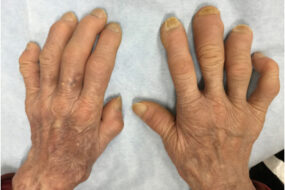- Home
- INTERNAL MEDICINE
- Trachoma

Leading infectious cause of blindness. Trachoma is caused by Chlamydia trachomatis. A gram negative obligate intracellular organism.
Humans are the only hosts. Transmission occurs directly from eye to eye in areas of poor hygiene, through fomites, and within families. Most common in children.
Risk factors; overcrowding, poor access to clean water
Clinical presentation
- Insidious onset. It May be asymptomatic.
- Maybe latent over long periods
2 phases;
- Active trachoma- mild self-limited follicular conjunctivitis- redness, discomfort, light sensitivity, and mucopurulent discharge
- Conjunctival scarring- eyelid scarring, a thick band near the lid’s margin( Arlt’s line), entropion
- Cornea becomes opaque
- Blindness
Diagnosis; mainly through clinical signs and epidemiological features
Investigations
- Immunofluorescence and iodine staining- intracellular inclusions
- Culture- identifies organism.
- Nucleic acid amplification tests- to identify antigen
Management
- Azithromycin 20mg/kg stat dose- superior
- Tetracycline eye ointment bd for six weeks
- Surgical management for scarring, corneal opacity, and ulcers. Only after infection control
Prevention
- Personal and family hygiene
- Care of eyes in newborns and young children
- Examine family contacts
SAFE strategy;
- Surgery
- Antibiotics
- Facial cleanliness
- Environmental improvement














